

Moodle. Everyone is talking about it, but here are just 10 things you can do to improve your virtual facilitation.
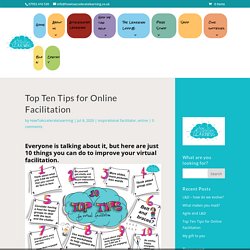
Think about what you CAN do online that you cannot do face to face Quite often we try to translate what we would do face to face into the virtual world and it feels like a compromise. So, think about what you can do online that is really hard face to face. For example, getting many ideas in 1 minute becomes easy when you don’t have to give space to individual contributions one after the other. Chat, whiteboard and online tools like LINOIT and MURAL make gathering thoughts easy! Be yourself, get chatty and encourage as much interaction as possible Think about how you will introduce the event and welcome people. More slides, more pictures, fewer words Don’t use the slides as a teleprompter. Some tips to facilitate a successful Risk Workshop. Browse Online Courses - FutureLearn.
Introducing Cards Against How Might We - Nova Scotia Digital Service - Medium. A game for changemakers in government SPOILER ALERT: We recently shared Cards Against How Might We game files on GitHub so that anyone can download, print, and play.
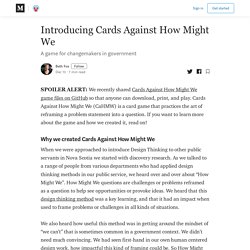
Cards Against How Might We (CaHMW) is a card game that practices the art of reframing a problem statement into a question. Evaluating methods for assessing VfM - Farida Fleming. iDepend webinar recording. Error - Cookies Turned Off. The application of machine vision instead of human eyes for object recognition has been increased considerably (Shortis 2015).
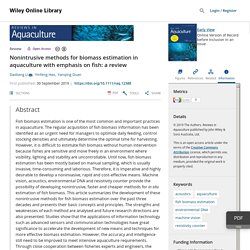
As a noninvasive, objective and repeatable tool, it has been widely employed in aquaculture for size measurement (Naiberg et al. 1993; Torisawa & Kadota 2011), mass estimation (Hufschmied et al. 2011), species and stock identification (Storbeck & Daan 2001; Zion et al. 2007; Spampinato et al. 2010; Fouad et al. 2013; Shafait et al. 2016; Atienza‐Vanacloig et al. 2016; Siddiqui et al. 2017), gender identification (Zion et al. 2008), quality assessment (Brosnan & Sun 2004; Dowlati et al. 2012), grading (Zhang et al. 2014a), behaviour monitoring (Duarte et al. 2009; Zhou et al. 2017) and counting (Rosen et al. 2013; Assis et al. 2013; Shortis et al. 2016).
Any decision making is simply chaotic process - You should learn Cynefin. Competitive Analysis Tools: Benchmark, Track and Research Sites – Alexa. Course12-2. Integrating horizon scanning and strategic risk prioritisation using a weight of evidence framework to inform policy decisions. JavaScript is disabled on your browser.
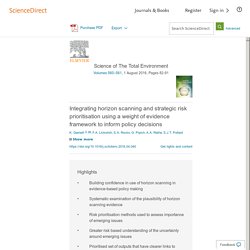
Please enable JavaScript to use all the features on this page. Highlights Building confidence in use of horizon scanning in evidence-based policy making Systematic examination of the plausibility of horizon scanning evidence Risk prioritisation methods used to assess importance of emerging issues Greater risk based understanding of the uncertainty around emerging issues Prioritised set of outputs that have clearer links to policy decisions Abstract Poor connection between data on emerging issues and credible policy decisions continues to challenge governments, and is only likely to grow as demands on time and resources increase. Keywords. How to Sketchnote — #OneTeamGovGlobal Session – kim mclaren. Ok so we need to start with two small disclaimers: We are by no means experts or professionals when it comes to this sort of thingWe pulled our session together on the day as this was the first time we’d ever actually met in person – yay for twitter pals IRL Our 45 minute session covered:
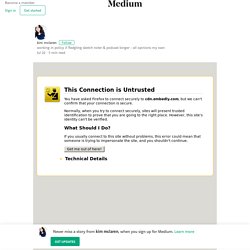
Evaluating methods for assessing VfM - Farida Fleming. 6 methods for evaluating value for money. At this beginning of a new year it is possible you are wondering whether your programs and initiatives are providing a good return on investment, or how your budget may be better spent.
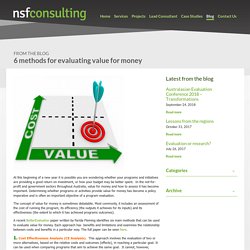
In the not-for-profit and government sectors throughout Australia, value for money and how to assess it has become important. Determining whether programs or activities provide value for money has become a policy imperative and is often an important objective of a program evaluation. The concept of value for money is sometimes debatable. Most commonly, it includes an assessment of the cost of running the program, its efficiency (the outputs it achieves for its inputs) and its effectiveness (the extent to which it has achieved programs outcomes). Process Classification Framework (PCF) - Cross Industry - Excel Version 7.2.0. APQC's Process Classification Framework® (PCF) is a taxonomy of business processes that allows organizations to objectively track and compare their performance internally and externally with organizations from any industry.

It also forms the basis for a variety of projects related to business processes. APQC's PCF was developed in the early 1990s by APQC and a group of members from a number of industries and countries throughout the world. Originally envisioned as a tool to aid in performance improvement projects, the framework evolved into the broad taxonomy that it is today. Organizations can use the PCF's common terminology to name, organize, and map their processes. It is also helpful as a tool for explaining a business in terms of horizontal processes rather than vertical functions. Data Ethics Framework. Ministerial Foreword Making better use of data offers huge benefits, in helping us provide the best possible services to the people we serve.
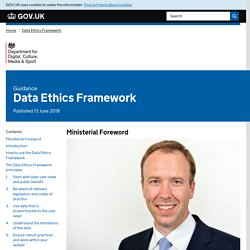
However, all new opportunities present new challenges. The pace of technology is changing so fast that we need to make sure we are constantly adapting our codes and standards. Those of us in the public sector need to lead the way. As we set out to develop our National Data Strategy, getting the ethics right, particularly in the delivery of public services, is critical. Open Policy Making toolkit - Guidance. Skip to main content GOV.UK uses cookies to make the site simpler.
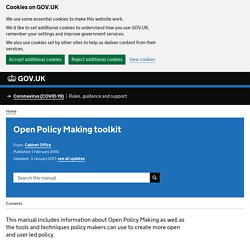
Find out more about cookies. UN Comtrade: International Trade Statistics. Better discoveries with the discovery block diagram — Myddelton. This is a diagram of what your discovery output should look like.
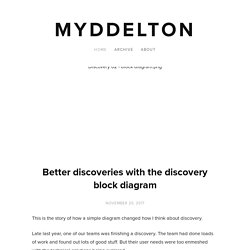
This diagram, more than anything else, has helped us do better discoveries on Government as a Platform. Let me talk you through the diagram and explain why it works. Context: outline the background In the context you outline the background to your discovery. You might include: Where the idea for the discovery came fromWho the different user groups are in this spaceWhat’s going on with technology and social trendsWhat other organisations are doing in this areaWhat unresolved problems you think there might be Include whatever makes sense to you.
Starting with the context, rather than the specific problem, helps you be clear that you have chosen one specific problem over others. Problem: define your focus In the problem you state clearly which bit of the context your discovery focused on.